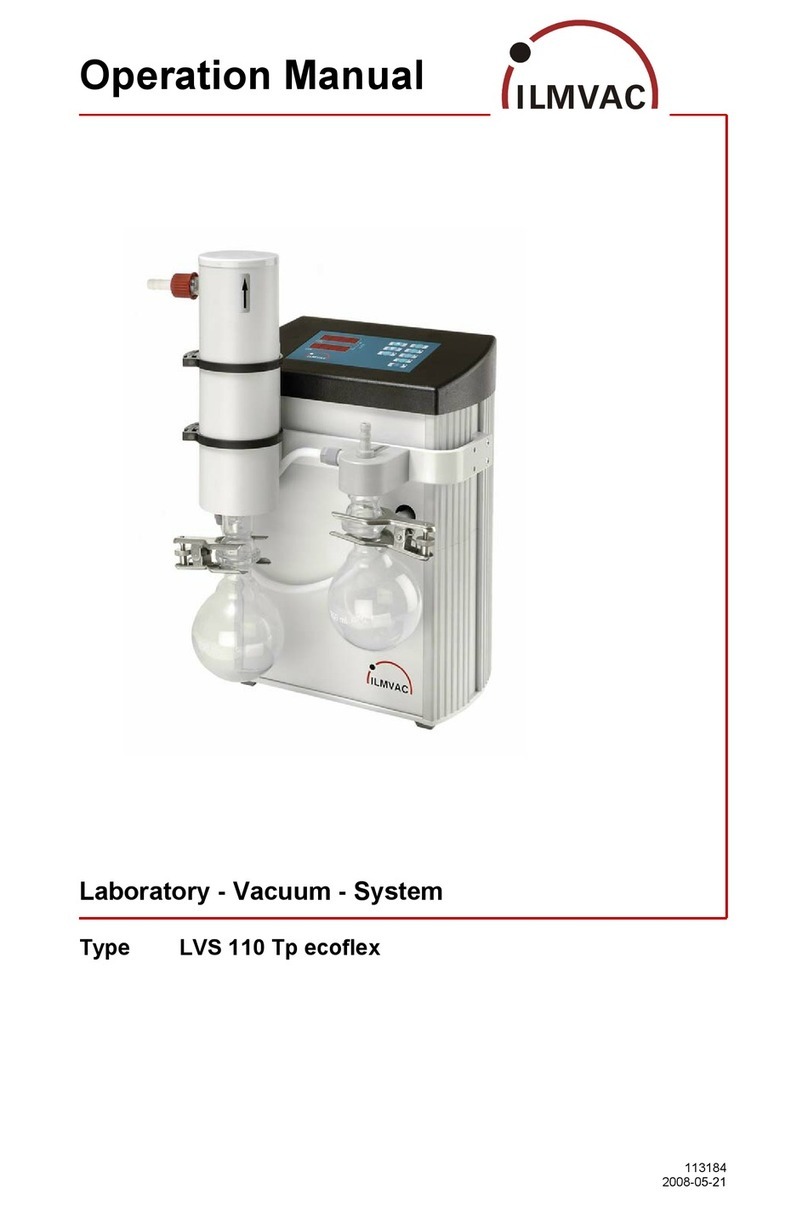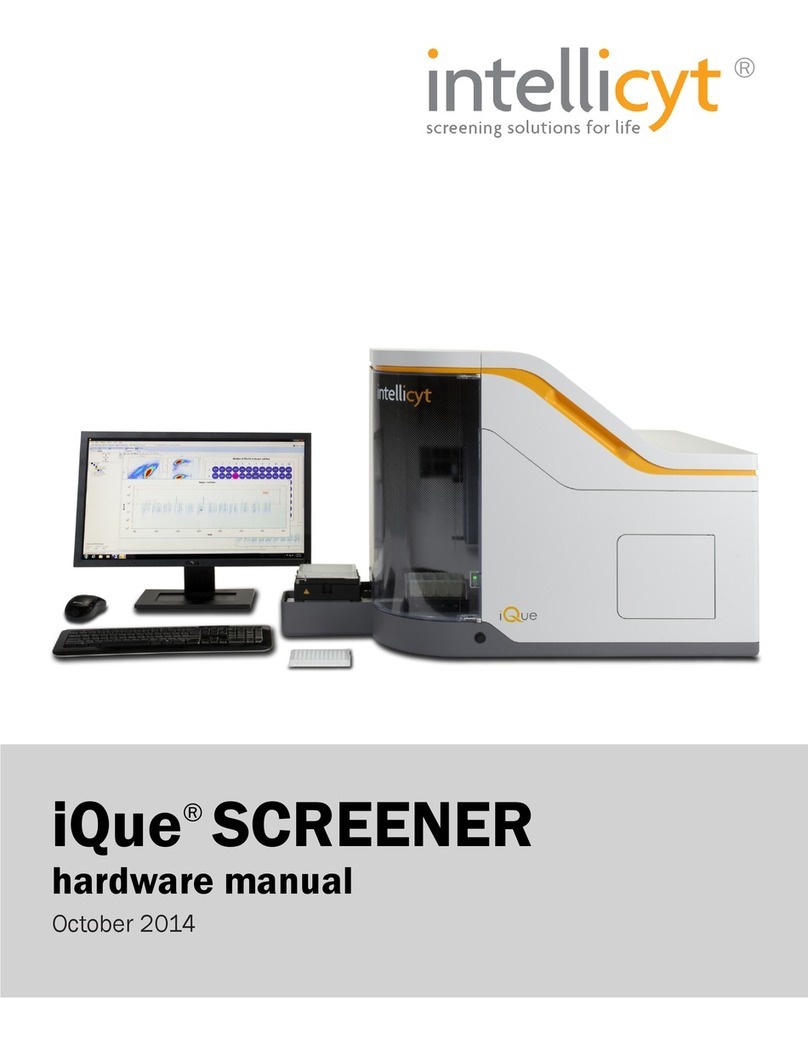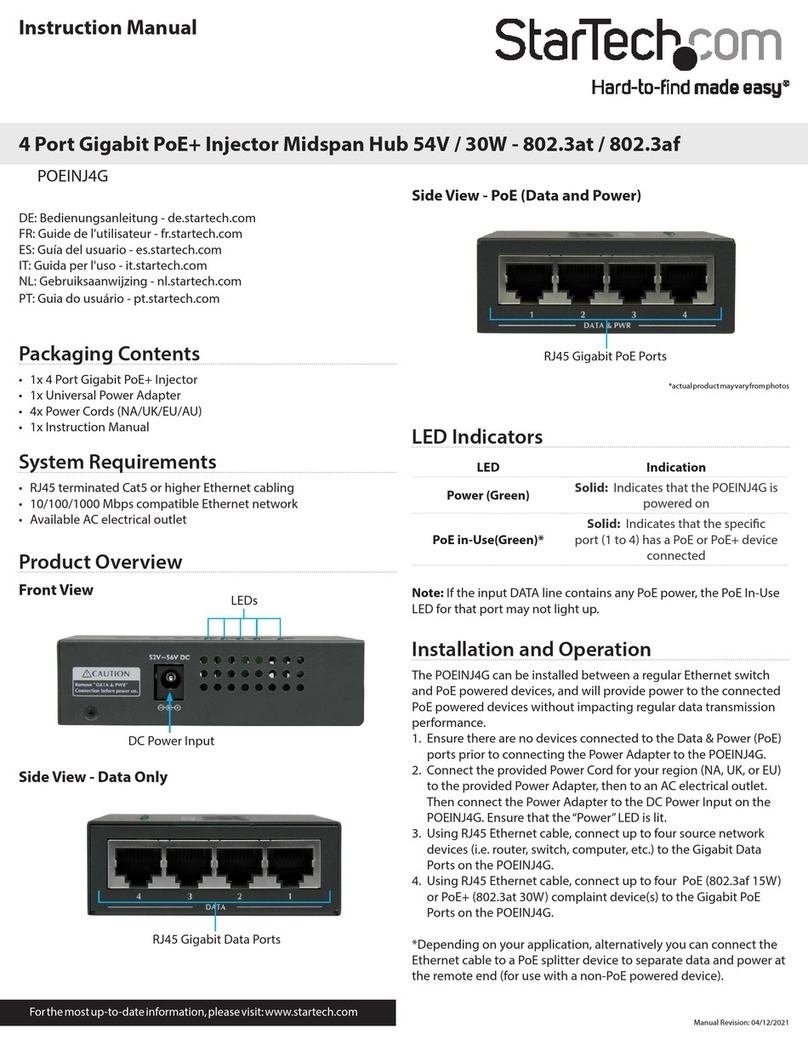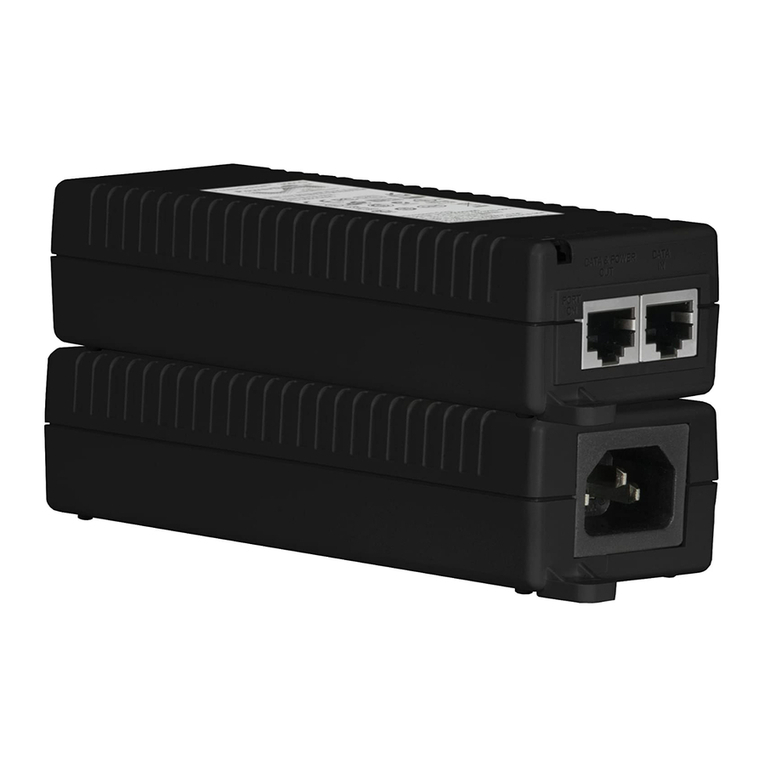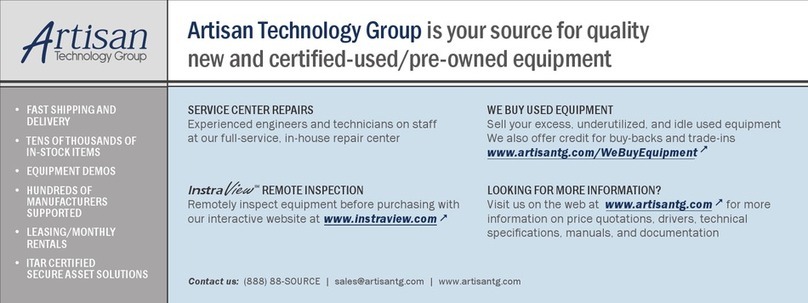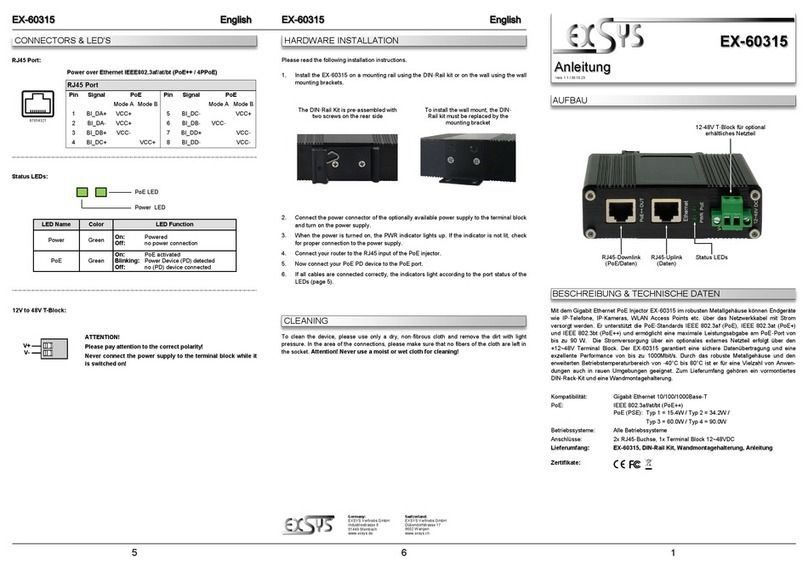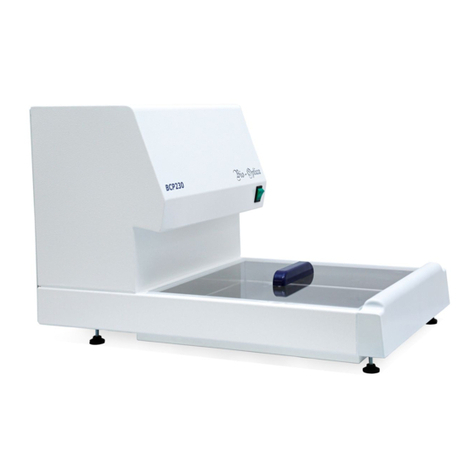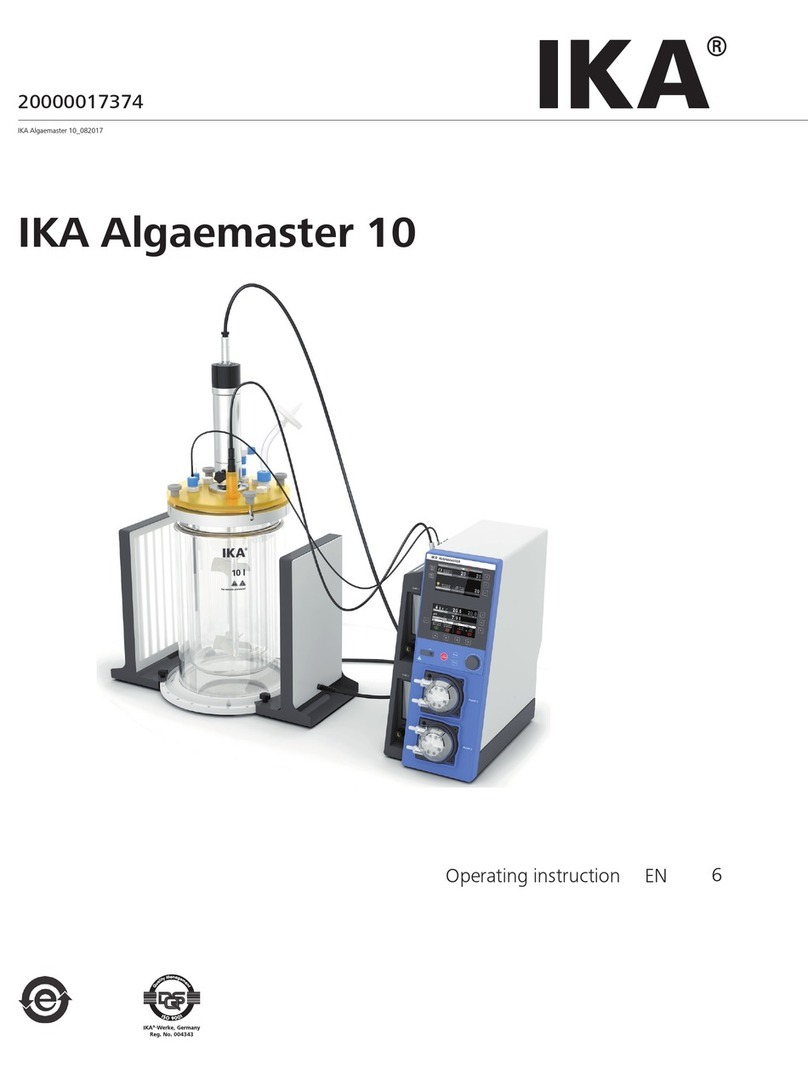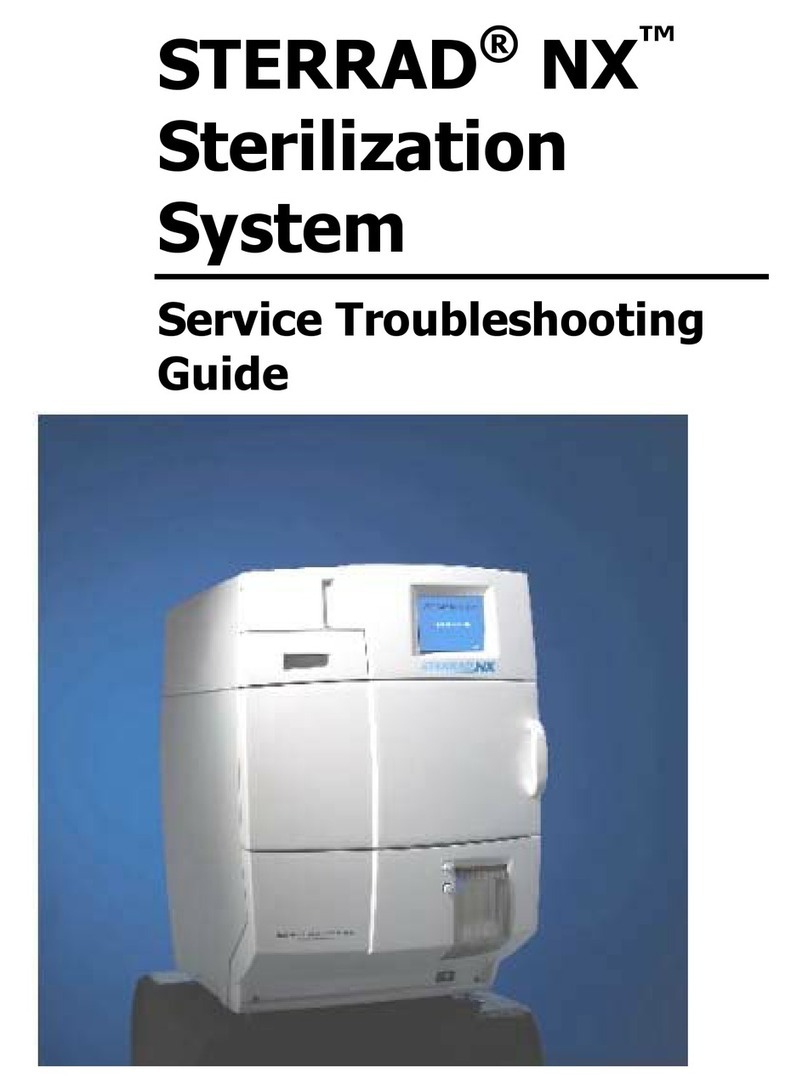Ilmvac LVS 101 Z User manual

Operation Manual
Laboratory - Vacuum - Systems
Ultimate pressure 8 mbar
Types unregulated LVS 101 Z
regulated LVS 110 Z
115022
2010-09-01

We are constantly working on the further development of all our product types.
Reprinting or reproduction of this manual, including extracts, is not allowed without the prior written permission of
ILMVAC GmbH.
All rights under the copyright laws are expressly reserved by ILMVAC GmbH.
We reserve the right to make changes and amendments.
ILMVAC GmbH
Am Vogelherd 20
D-98693 Ilmenau
Tel.: +49 3677 - 604 0
Fax: +49 3677 - 604 110
www.ilmvac.de
www.ilmvac.com

Contents
Contents
1Important Information.............................................................................................................5
1.1 General Information ..................................................................................................................5
1.2 Target Groups...........................................................................................................................5
1.3 Intended Use.............................................................................................................................5
1.4 Use for an Unauthorized Purpose ............................................................................................5
1.5 Safety Devices ..........................................................................................................................6
1.6 Meaning of the Warning notes ..................................................................................................6
1.7 Product Standards, Safety Regulations....................................................................................6
2Basic Safety Instructions .......................................................................................................7
2.1 General Information ..................................................................................................................7
2.2 Electricity...................................................................................................................................7
2.3 Mechanical Systems .................................................................................................................8
2.4 High Temperatures ...................................................................................................................8
2.5 Hazardous Substances.............................................................................................................9
3Description ............................................................................................................................10
3.1 Design and Function ...............................................................................................................10
3.1.1 Laboratory-Vacuum-Systems .................................................................................................10
3.1.2 Diaphragm pump ....................................................................................................................11
3.1.3 Vacuum Controller 521 ...........................................................................................................12
3.2 Overview of the variants .........................................................................................................12
3.3 Areas of Application ................................................................................................................12
3.4 Scope of Delivery....................................................................................................................12
3.5 Examples of application ..........................................................................................................13
3.6 Accessories.............................................................................................................................14
4Technical Data.......................................................................................................................16
4.1 View of device and dimensions...............................................................................................16
4.2 Intake Pressure / Pumping Speed – Diagram ........................................................................16
4.3 Device Data LVS.....................................................................................................................17
4.3.1 Device Data – Vacuum Controller 521 ...................................................................................18
5Assembly and Installation....................................................................................................19
5.1 Unpacking ...............................................................................................................................19
5.2 Installation and Connection.....................................................................................................19
5.2.1 General instructions ................................................................................................................19
5.3 Storage....................................................................................................................................20
5.4 Scrap Disposal ........................................................................................................................20
6Operation ...............................................................................................................................21
6.1 LVS without vacuum controller ...............................................................................................21
6.2 LVS with vacuum controller ....................................................................................................21
6.3 Operating modes of the Controller..........................................................................................21
6.3.1 Mode 1, Manual operation ......................................................................................................21
6.3.2 Mode 2, Automatic operation ..................................................................................................21
6.3.3 Mode 3, Ultimate pressure......................................................................................................21
6.4 Monitoring by Level Sensor ....................................................................................................22
6.5 Calibrating the Pressure Sensor.............................................................................................22
115022 Ilmvac GmbH 3

Contents
6.6 Handling ................................................................................................................................. 22
6.6.1 Control panel .......................................................................................................................... 22
6.6.2 Operating via Buttons and Encoder ....................................................................................... 23
6.6.3 Menu Guidance ...................................................................................................................... 23
6.7 Electrical parameters.............................................................................................................. 28
6.7.1 Printed circuit board – Controller 521..................................................................................... 28
6.8 Software update ..................................................................................................................... 31
6.9 Operation using the "ILMVAC-Control 521" PC program ...................................................... 32
6.9.1 Menu item: „File“ .................................................................................................................... 33
6.9.2 Menu item: „Settings!“ ............................................................................................................ 34
6.9.3 Menu item: „Calibrate“............................................................................................................ 36
6.9.4 Menu item: „Factory settings“................................................................................................. 37
6.10 Table of solvents .................................................................................................................... 38
7Maintenance and Servicing................................................................................................. 39
7.1 General Requirements ........................................................................................................... 39
7.2 Maintenance Performed by the User ..................................................................................... 39
7.2.1 Maintenance of the diaphragm pump..................................................................................... 39
7.2.1.1 Disassembly ........................................................................................................................... 40
7.2.2 Assembly................................................................................................................................ 40
7.2.2.1 Test......................................................................................................................................... 41
7.2.3 Maintenance of the vacuum controller ................................................................................... 41
7.2.4 Maintenance of other components......................................................................................... 41
7.3 Maintenance by the Manufacturer.......................................................................................... 41
7.4 Damage Report ...................................................................................................................... 41
8Troubleshooting ................................................................................................................... 42
9Spare Parts Overview .......................................................................................................... 43
9.1 Maintenance kit - Diaphragm Pump....................................................................................... 43
9.2 Spare parts view LVS 101 Z .................................................................................................. 44
9.2.1 Spare parts list LVS 101 Z ..................................................................................................... 45
9.3 Spare parts view LVS 110 Z .................................................................................................. 46
9.3.1 Spare parts list LVS 110 Z ..................................................................................................... 47
9.4 Diaphragm pump MPC 101 Z ................................................................................................ 48
9.4.1 Spare parts list MPC 101 Z .................................................................................................... 49
EC Declaration of Conformity
4 Ilmvac GmbH 115022

Important Information
1 Important Information
1.1 General Information
The ILMVAC Laboratory-Vacuum-Systems conform to the
• 2006/95/EC Low Voltage Directive
• 2006/42/EC Machinery Directive
• 2004/108/EC Electromagnetic Compatibility Directive
The CE sign is located on the rating plate. Observe the binding national and local regulations
when fitting the pump into installations.
Our products are sold worldwide and can therefore be equipped with the typical national
plugs and for the various voltages. You will find more information about the available designs
under http://www.ilmvac.de.
1.2 Target Groups
This Operating Manual is intended for the personnel planning, operating and maintaining
ILMVAC Laboratory-Vacuum-Systems. This group of people includes:
• Designers and fitters of vacuum apparatus,
• Employees working on commercial laboratory and industrial vacuum technology applica-
tions and
• Service personnel for laboratory-vacuum-systems.
The personnel operating and maintaining the laboratory vacuum systems must have the
technical competence required to perform the work that has to be done.
The user must authorize the operating personnel to do the work that has to be done.
The personnel must have read and understood the complete Operating Manual before using
the laboratory-vacuum-systems.
The Operating Manual must be kept at the place of use and be available to the personnel
when required.
1.3 Intended Use
• The laboratory-vacuum-system may only be operated under the conditions stated
– in the "Technical Data" section,
– on the type plate, and
– in the technical specification for the order concerned.
• Laboratory-vacuum-systems are approved for extracting, pumping and compressing
gases and vapours. If these gases and vapours are toxic or explosive, then the user must
observe the currently valid safety regulations for this application. Special types of dia-
phragm pumps are available for aggressive and explosive gas mixtures.
• Laboratory-vacuum-systems are intended for generating vacuums with ultimate pres-
sures of around 8 mbar.
• The in-built diaphragm pump has been designed to have high resistance to aggressive
gases.
1.4 Use for an Unauthorized Purpose
It is forbidden to use the pump for applications deviating from the technical data stated on
the type plate or the conditions stated in the supply contract, or to operate it with missing or
defective protective devices.
115022 Ilmvac GmbH 5

Important Information
1.5 Safety Devices
Measures such as the following are for the safety of the operating personnel:
• electrical connection with a protective conductor (operating mode S1) and an earthing
plug,
• Motor protection switch (thermal),
• “Hot Surface" label on the pump body (warning notice),
• motor hood on the motor fan and
• glass components with a transparent plastic coating which protects them against bursting
and cracking
The laboratory-vacuum-system must not be operated without these elements.
1.6 Meaning of the Warning notes
Take note of the warning notices. They are in the following box:
CAUTION ! / WARNING !
Hazard which may lead to serious injuries or material damage.
1.7 Product Standards, Safety Regulations
ILMVAC Laboratory-Vacuum-Systems meet the following product standards:
DIN EN ISO 12100-1 : 2004
DIN EN ISO 12100-2 : 2004
Safety of machines, basic terminology
DIN EN 1012-2 : 1996 Compressors and vacuum pumps
DIN EN 60204-1 : 2006 Electrical equipment of machines
EN 50110-1 (DIN VDE 0105-100) Operation of electrical installations
EN 61010-1 Safety for laboratory devices
EN 50081-1-2 Electromagnetic compatibility (EMC)
Generic specification - Interference resistance
for residential, business and industrial areas, and small businesses
EN 50082-1-2 Electromagnetic compatibility (EMC)
Generic specification - Interference emission
for residential, business and industrial areas, and small businesses
EN 55014 Radio disturbance characteristics of electrical equipment and
systems
EN 61000-3-2/3 Electromagnetic compatibility (EMC)
Directive 2006/42/EC Law and Administration Regulations relating to Machinery
Directive 2002/95/EC RoHS Restriction of use of certain hazardous substances
The following additional safety regulations apply in the FR Germany:
BGV A2 Electrical equipment and operating materials
VBG 5 Power-driven machines
BGR 120 Guidelines for laboratories
BGI 798 BG hazard assessment in the laboratory
BGG 919 Accident prevention regulations for "compressors"
BGR 189 (BGR 195; 192; 197) Use of protective working clothes
Observe the standards and regulations applying in your country when you use the labora-
tory-vacuum-systems.
6 Ilmvac GmbH 115022

Basic Safety Instructions
2 Basic Safety Instructions
2.1 General Information
CAUTION !
Warning notices must be observed. Disregarding them may lead to damage to health
and property.
The laboratory vacuum systems must be operated by personnel who can detect impending
dangers and take action to prevent them from materialising.
The user/operator is responsible for correct installation and safe operation.
Prevent condensate collecting in the pump. When pumping vapours which tend to condense,
please ensure that the pump is at operating temperature and that the gas ballast valve is
open when the pump is switched on.
If there is more than one load on one LVS, they must be separated by check valves.
After finishing work with the diaphragm pump, run it for about 10 minutes with an open gas
ballast valve.
The manufacturer or authorized authorised workshops will only service or maintain the labo-
ratory vacuum system if it is accompanied by a fully completed damage report. Precise in-
formation about the contamination (also negative information if necessary) and thorough
cleaning of the laboratory vacuum system are legally binding parts of the contract.
Contaminated laboratory vacuum systems and their individual parts must be disposed of in
accordance with the legal regulations.
The local regulations apply in foreign countries.
2.2 Electricity
The Laboratory Vacuum Systems are supplied for operating mode S1. Please note that the
testing must be repeated in accordance with DIN EN 0105, DIN EN 0702 and BGV A2 in ca-
se of portable devices.
The local regulations apply in foreign countries.
Please note the following when connecting to the electrical power supply system:
• The electrical power supply system must have a protective connector according to DIN
VDE 0100-410 (IEC 60364-4-41).
• The protective connector must not have any breaks.
• The connecting cable must not be damaged.
• All interfaces are under low voltage according to DIN VDE 0100-410.
115022 Ilmvac GmbH 7

Basic Safety Instructions
2.3 Mechanical Systems
Improper use can lead to injuries or material damage. Observe the following instructions:
• Only operate the laboratory vacuum systems with hoses of the specified dimensions.
• The maximum permissible pressure of 1 bar at the suction connection must not be ex-
ceeded.
• Hazardous substances must be separated out as far as this is technically possible before
they reach the pump.
• External mechanical stresses and vibrations must not be transmitted to the pump. Only
use flexible laboratory hoses for connecting laboratory vacuum systems.
• The overpressure generated at the pressure port must not exceed 1 bar.
• The pump must not be used to suck up fluids. Lay the exhaust pipe so that it slopes
downwards, so allowing condensate to flow out of the pump. Collect the condensate and
dispose of it in an environmentally compatible manner.
CAUTION !
Solid particles in the pumping medium impair the pumping action and can lead to
damage. Prevent solid particles penetrating into the pump.
When handling glass vessels, pay attention to:
• Only use glass vessels with a plastic coating for splinter protection.
• Only use vessels which are suitable for use with vacuums (e.g. round-bottomed flasks).
We recommend that only glass components supplied by the manufacturer are used.
Do not use Erlenmeyer flasks.
• Before each evacuation, check glass vessels for damage which might impair their streng-
th, replace them if any such damage is found.
• Do not heat glass vessels on one side only.
• Retardation of the boiling of the gases to be pumped can lead to a sudden pressure in-
crease. Prevent retardation of boiling by means of suitable measures (e.g. turbulent
agitation).
2.4 High Temperatures
The diaphragm pump may heat up as a result of the temperature of the gas being pumped
and through compression heat.
Prevent the following maximum permissible temperatures from being exceeded.
• + 40 °C for the environment, and
• + 60 °C for the gas to be pumped.
The motor for single phase alternating current is protected against overload by an integrated
motor protection switch.
8 Ilmvac GmbH 115022

Basic Safety Instructions
2.5 Hazardous Substances
The operating company bears the responsibility for the use of the laboratory vacuum system.
Hazardous and harmful substances must be effectively prevented from escaping.
Ensure that all lines and connections are leak tight.
Handle exhaust gases in accordance with the requirements of the emission protection regu-
lations.
Do not operate the laboratory vacuum system without a separator without a emission con-
denser. The separator can onl y be em ptied after the apparatus has been vented.
Dispose the condensate in an environmentally compatible manner!
The emission condenser has a safety valve. The air evacuation duct with hose must be kept
clear and lead into a suitable air evacuation duct. Throttling the air evacuation duct can da-
mage the valves of the diaphragm pump.
Hazardous substances in the gases to be pumped can cause personal injuries and property
damage. Pay attention to the warning notices for handling hazardous substances.
The local regulations apply in foreign countries.
Combustible Gases
Examine before switching on whether that can form gas combustible gas/air mixtures which
can be promoted! Consider the regulations of the guideline 1999/92/EC.
Explosive gases
The diaphragm pumps is not certified according to ATEX guidelines 94/9/EC.
Aggressive gases
An MPC series diaphragm pump is used for extracting vapours and aggressive gases.
The warranty shall lapse if the LVS is used with diaphragm pumps from other manufacturers.
Especially aggressive gases have to be explicitly checked for material resistance as de-
scribed in chapter 3.1.2 and, if necessary, modified.
Poisonous gases
Use a separator when pumping poisonous or harmful gases. Prevent such substances from
leaking out of the appliance or pump. Treat these substances according to the applicable
environmental protection regulations.
The diaphragm pump, control valves and hose lines can be damaged by poisonous or ag-
gressive gases.
Test the strength and leak-tightness of the connecting lines and the connected apparatus.
Prevent environmental poisons, e.g. mercury, getting into the diaphragm pumps.
Fulfil the requirements, for example:
• German Hazardous Substances Regulation (GefStoffV) of 23. December 2004
• Regulations 2006/121/EC (classification, packaging and identification of hazardous sub-
stances),
• Manufacturer's safety data sheets on hazardous substances.
115022 Ilmvac GmbH 9

Description
3 Description
3.1 Design and Function
3.1.1 Laboratory-Vacuum-Systems
The Laboratory Vacuum Systems are supplied as a ready-mounted unit.
The chemical-resistant diaphragm pump (4) is fitted to the base plate of the column (3) and
attached on the suction-side to the separator (7) to protect the pump from foreign matter and
on the pressure-side to the KD 500/5 emission condenser (6) to recover the condensate.
This ensures that hazardous substances are separated out. The safety valve on the emis-
sion condenser protects against an impermissibly high operating pressure on the outgoing
air end.
The complete vacuum controller, with sensor, venting valve and power unit (5), is fitted in the
column (3). (The non-controlled LVS-variant does not have a controller.)
All exposed glass components (6, 7) are coated with transparent plastic as protection a-
gainst bursting. The emission condenser is supplied with insulation.
The power switch (12) and the plug for the power cable (11) as well as the membrane pump
(10), the PC (13) control lead (14) and the water valve (option) (15) are located on the right
of the column.
The LVS types are specially preconfigured according to model.
1 Pressure side connection
hose nozzle for hose DN8
2 Control valve
(controlled in the case of the LVS)
3 Column complete
on swivelling foot
4 Diaphragm pump MPC 101 Z
with gas ballast valve and main switch
5 Vacuum controller 521
6 Emission condenser, short
KD 500/5 insulated
at the pressure side with safety valve
and cooling water connections
7 Separator
(round-bottomed flask) suction side
Fig. 1a LVS 110 Z - Front view
8 Cooling water
(feed flow/back flow)
9 Connection outgoing air
hose nozzle for hose DN8
10 Connection Pump (pump)
11 Connection non-heating device power
cable (main in)
12 Main switch (power)
13 Connection PC (RS 232)
14 Connection control cable
controlled LVS (sensor)
15 Connection water valve
16 Connection inert gas
17 Gas ballast valve
Fig. 1b LVS 110 Z - Rear view
10 Ilmvac GmbH 115022

Description
3.1.2 Diaphragm pump
Design:
The diaphragm pump consists of a pump body and a drive motor.
The pump body consists of a drive shaft and two pump heads. Both pump head contains a
diaphragm and the work valves. The two pump heads are arranged opposite each other. In
the two-stage (Z) diaphragm pump, both pump heads are connected in series.
The pump heads are driven via an eccentric shaft with a connecting rod.
Function:
Motor, eccentric shaft and connecting rod set the diaphragms in stroke movement. This
changes the size of the space between the diaphragms and pump head (pump chamber).
Increasing the size of the pump chamber opens the inlet valve while the outlet valve is clo-
sed (intake process). Decreasing the size of the pump chamber ejects the gas through the
outlet valve.
The valves are actuated by the gas being pumped. A large proportion of fluid in the dia-
phragm pump minimizes the pumping efficiency.
Component Materials
Connection- / pump head PTFE with carbon-fibre reinforcing
Seal EPDM
Screw fitting PVDF / PP
Valves PEEK
Diaphragm fabric reinforced with a PTFE layer
Connecting elements PP
PTFE with carbon-fibre reinforcement, electrically conductive (with manufacturer's certificate
of electrical conductivity).
Material resistance to aggressive media see: “Kunststoff Kautschuk Produkte“, Jahreshand-
buch der Verarbeiter 2000/2001 ("Plastic, Rubber Products“, Annual Handbook of the Proc-
essor 2000/2001), Publisher Hoppenstedt Darmstadt, Vienna, Zurich.
Gas ballast :
Opening the gas ballast valve (17) in the
suction line of the last pump stage allows
air to flow into the pump chamber. This
prevents condensation and flushes the
pump clear.
Operation leads to:
- Increasing the ultimate pressure and
- Increasing the operating temperature.
Fig. 2 Diaphragm pump MPC 101 Z
115022 Ilmvac GmbH 11

Description
3.1.3 Vacuum Controller 521
In the case of controlled models for laboratory vacuum systems LVS, the vacuum controller,
complete with sensor, venting valve and power unit, is fitted in the device column. The oper-
ating and display elements are on the top surface of the column. Description and operation
are to be found in chapter 6 of this operating manual.
The Laboratory Vacuum Systems is supplied with complete internal electric wiring.
Technical data: see chapter 4.3.1
3.2 Overview of the variants
Laboratory-Vacuum-Systems LVS
piece per LVS
Part
101 Z 110 Z
Suction side connections for hose DN 8 1 unregulated 1 regulated
Control valve - 1
Column complete 1 1
Diaphragm pump 1 1
Vacuum controller 521 - 1 (cv)
Emission condenser 1 1
Separator 1 1
Pressure side connection for hose DN 8 1 1
3.3 Areas of Application
The Laboratory-Vacuum-Systems is intended for:
• vacuum filtration, vacuum distillation and vacuum drying.
• use in physical and chemical laboratories in trade and industry.
• pumping and compressing neutral and aggressive gases and vapours.
• generating a vacuum up to an ultimate pressure of around 8 mbar without using the lubri-
cant oil.
Special designs:
• Special LVS can be supplied after consultation with the manufacturer or for a correspond-
ing supply contract.
• Motors for different voltages.
3.4 Scope of Delivery
The scope of delivery is specified in the supply contract.
12 Ilmvac GmbH 115022

Description
3.5 Examples of application
1 LVS without vacuum controller 5 Capable of expansion up to 4 loads
2 Suction line * 6 Coolant system, un pressurised run back *
3 Outgoing air 7 Water valve WV *
4 Rotary vaporizer *
Fig. 3 Example of application - LVS unregulated
1 LVS with vacuum controller and 4 Rotary vaporizer *
control valve (cv) 5 Capable of expansion up to 4 loads
2 Suction line * 6 Coolant system, un pressurised run back *
3 Outgoing air 7 Water valve WV *
Fig. 4 Example of application – LVS regulated (Control valve) „cv“
115022 Ilmvac GmbH 13

Description
3.6 Accessories
The use of chemical-resistant vacuum connections „netvac“ is recommended for extending
the application range of a vacuum generator to several workstations.
Here is a selection:
"ILMVAC-Control 521" operating software
on CD
to connect the vacuum controller to the PC
Order no. 620637
netvac set M02+ / R04
with integrated Kalrez - check valve and ball tap
Area of application: laboratory work bench
Suction connector: for hose DN 8
Port thread: 3/8 “ – outside
Valve body material: polypropylene (PP)
Dimensions (W/D/H): 55 x 40 x 150 mm
Fitting borehole: A = Ø26 to Ø35 mm
Designation: netvac set M02+ / R04
Order no. 700532-03
netvac set M04+ / R01
with integrated Kalrez - check valve and fine regulating valve
Area of application: laboratory work bench
Suction connector: for hose DN 8
Port thread: 3/8 “ – outside
Valve body material: polypropylene (PP)
Dimensions (W/D/H): 95 x 40 x 75 mm
Fitting borehole: A = Ø26 to Ø35 mm
Designation: netvac set M04+ / R01
Order no. 700534
netvac - check valve
The check valve prevents other tapping points from being influenced.
for PTFE vacuum connection,
Outside diameter: 10 / 8x1
Designation: netvac M12
Order no. 700440
14 Ilmvac GmbH 115022

Description
Vacuum Control-Box VCB 521 cv
Table model as digital, chemical-resistant vacuum regulator.
With integrated sensor, airing -, control- and check valve.
Connection vacuum apparatus: DN 8
Connection vacuum pump: DN 8
Connection inert gas: DN 4
Connection water valve: Binder plug 4-pole 24V DC
Order no. 600053
Please state the length you
want to order.
Vacuum hose PTFE 10/ 8x1
Order no. 828332
115022 Ilmvac GmbH 15

Technical Data
4 Technical Data
4.1 View of device and dimensions
The main dimensions are identical for all types stated here.
(H)
(D)
(W)
Fig. 5 View of device LVS 110 Z and dimensions (see chapter 4.3)
4.2 Intake Pressure / Pumping Speed – Diagram
Fig. 6 Intake Pressure / Pumping Speed – Diagram
16 Ilmvac GmbH 115022

Technical Data
4.3 Device Data LVS
Parameter Unit LVS 101 Z LVS 110 Z
Pumping speed 50/60 Hz
DIN 28432
at speed of 1500 rpm
m3/ h 1.0 / 1.1
Ultimate pressure
at speed of 1500 rpm <8
Ultimate pressure
with gas ballast
at speed of 1500 rpm
mbar
18
Max. inlet pressure 1
Max. outlet pressure bar 1
Intake and pressure ports - Hose nozzle DN 8
for hose inside diameter 8 mm
Ambient temperature + 10 to + 40
Max. Operating gas temperature °C + 60
Bearing - maintenance-free
Reference surface
sound pressure level
DIN 45635 part 13
dB (A) <44
Voltage / Frequency
(different data upon customer request) V, Hz 230, 50/60 (115, 50/60)
(generally with motor protection switch, switch and cable)
Power kW 0.06
Operating mode S 1
Type of protection (motor)
DIN EN 60529 IP 54
Class of insulation
DIN EN 600034-1
-
F (160°C)
Dimensions (W/D/H) mm 360 / 310 / 445
Weight kg 11.6 13.1
Order numbers for :
- Mains connection cable IEC
with plug CEE (D) 825885
- Mains connection cable IEC
with plug BS (UK) 825878
- Mains connection cable IEC
with plug type 12 (CH) 825877
- Mains connection cable IEC
with plug NEMA 1-15 (US) 825903
Order numbers for :
- LVS 230 V
without mains connection cable 115022 115024
- LVS 115 V
without mains connection cable
-
115022-01 115024-01
115022 Ilmvac GmbH 17

Technical Data
4.3.1 Device Data – Vacuum Controller 521
Parameter LVS 110 Z Unit
Sensor integrated
Sensor type ceramic sensor -
Measuring range 1 - 1100
Measuring uncertainty ±2; FS mbar
Controller
3 conductor interface -
10 Hz
12 Bit
+ 5 stabilized
Sensor interface :
- Scan frequency
- Resolution ADC
- Power supply
- Sensor signal 0.5 to 4.5 (optionally also 0..5 V or 4..20 mA possible) V
Pressure indicator digital; red, 9 mm high digits in mbar, torr or psi -
Switching accuracy/
control accuracy ±1 digit
digital -
0; 24 V
12
Switching outputs :
- Voltage level
- Control power, single
- Control power, total 24 W
3
x
x
x
Switching outputs used :
- Control valve
- Ventilation valve
- Water valve
- Pump net connection -
Communication interfaces RS 232 , RS 485 (optional)
-
Power consumption
Controller in normal operation max. 20 (depends upon the control power) W
Fuse (internal controller) 5 A
Power pack internal
Operating voltage 90 .. 264 V AC
Operating frequency 50 / 60 Hz
Output voltage 24 V DC
Output current 1.25 A
Output power 30 W
Entire unit
Protective system IP 20 -
Working temperature 15 - 40 °C
Connections
IN/OUT: RS 232 SUB-D plug 9-pole
OUT: Control valve Control valve
integrated
OUT: Water valve Binder socket 4-pole, 24 V DC
Connection : Inert gas integrated, Hose nozzle DN 4
-
18 Ilmvac GmbH 115022

Assembly and Installation
5 Assembly and Installation
5.1 Unpacking
Carefully unpack the laboratory-vacuum-system.
Check the system for:
• Transport damage,
• Conformity with the specifications of the supply contract (type, electrical supply data),
• Completeness of the delivery.
Please inform ILMVAC GmbH without delay if there are discrepancies between the delivery
and the contractually agreed scope of delivery, or if damage is detected.
Please take note of the general terms of business of ILMVAC GmbH.
In case of a claim under warranty, the device must be returned in packaging that is
suitable for protecting it during transport.
5.2 Installation and Connection
• Set the laboratory-vacuum-system on a flat and horizontal surface.
• Remove the protective caps on the connections.
• Connect the suction connector of the LVS to your apparatus with vacuum hose DN8.
• Connect the cooling water tube to the emission condenser.
• The cooling water return flow must be unpressurized.
• Connect the air exhaust to the central air exhaust system.
• Connect the laboratory-vacuum-system to the power supply.
• Check that the connections are properly seated.
5.2.1 General instructions
Observe the basic safety instructions when using the LVS.
The pressure device regulation 97/23/EC must be observed if devices with an overpressure
of 0.5 bar or more are connected.
The pressures at the suction and pressure sides of the diaphragm pump at the time it is
switched on must correspond to the specifications of DIN 28432.
In order to avoid pumping speed losses, all the vacuum connecting hoses used should have
a large nominal diameter and should be laid out so that the lengths are as short as possible.
Avoid rigid connections. They must be assembled carefully in order to achieve a low leak ra-
te.
We recommend fitting non-return valves (order no. 720327) for applications with several
consumers.
The upstream separator on the suction-side serves to protect the diaphragm pump and the
vacuum sensor from condensates and mechanical contamination. It must be used for an ap-
plication. The level in the separator must be monitored and the separator emptied regularly.
The currently valid regulations must be observed when disposing of waste. The separator on
the suction-side can only be removed and emptied after the system has been vented.
115022 Ilmvac GmbH 19

Assembly and Installation
The emission condenser enables a 100 per cent recovery of the solvents led through the
vacuum pump. Cooling takes place via the DN 8 hose nipples. Ensure that the outflow is
clear. The safety valve is located at the gas inlet. The rubber valve seal must be checked
for cracks at regular intervals and exchanged when necessary. The exhaust connection must
be unpressurized. The exhaust can be led off through a DN 10 hose into a suitable evacua-
tion duct. There is common solvent reclamation for all the connected systems. Mixing media
must not lead to a hazard for persons, the environment of for the equipment.
Condensable vapours may only be extracted when the pump is at operating temperature.
When doing so, the gas ballast valve should be opened and/or a quantity of air, which is to
be calculated by the user, allowed to enter via the suction port valve. The pressure values
may be increased when doing so. The diaphragm pump's maximum tolerance of water va-
pour pressure can be improved or a cleaning run can be made after finishing work by open-
ing the gas ballast valve (this significantly reduces the pumping speed and ultimate pres-
sure). The vacuum ducts must always be laid sloping downwards so that condensates can
flow into the relevant separators.
In case of soiling by solid matter, the pump heads must be opened and the entire interior
space, including valves and diaphragm, cleaned mechanically (see chapter 7.2.1).
5.3 Storage
The pumps are to be stored in a low-dust, interior room within the temperature range from
+ 5 to + 40 °C and at a relative air humidity < 90%.
Leave the protective elements on the suction and pressure ports. Another equally good pro-
tection may be used.
5.4 Scrap Disposal
CAUTION !
The laboratory-vacuum-systems must be disposed of in accordance with the
2002/96/EC guideline and the specific national regulations.
Contaminated pump systems must be decontaminated according to the laws.
20 Ilmvac GmbH 115022
This manual suits for next models
1
Table of contents
Other Ilmvac Laboratory Equipment manuals
Popular Laboratory Equipment manuals by other brands

Advanced Measurement Technology
Advanced Measurement Technology 273A user manual
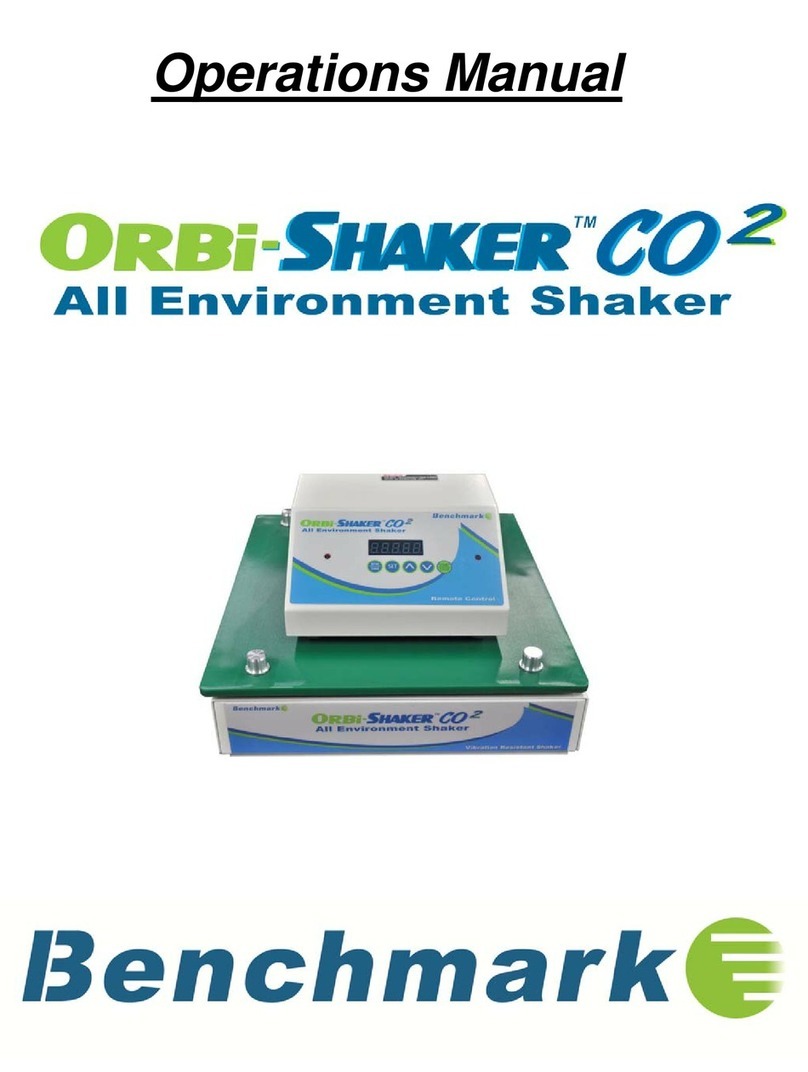
Benchmark
Benchmark Orbi-Shaker CO2 Operation manual
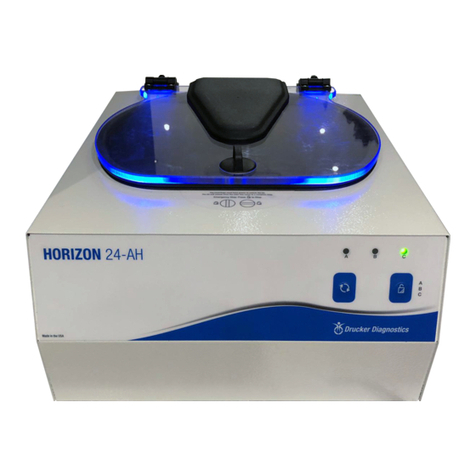
Drucker Diagnostics
Drucker Diagnostics HORIZON 24-AH Operator's manual
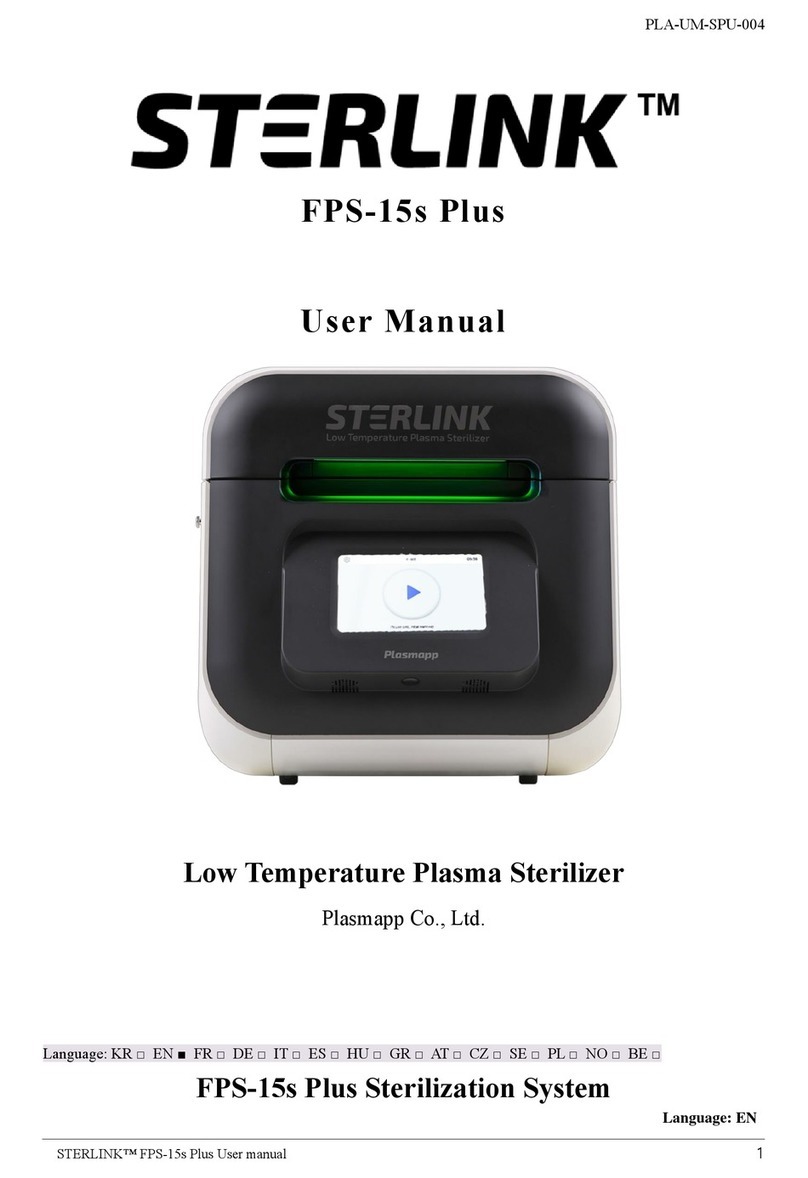
Plasmapp
Plasmapp Sterlink FPS-15s Plus user manual
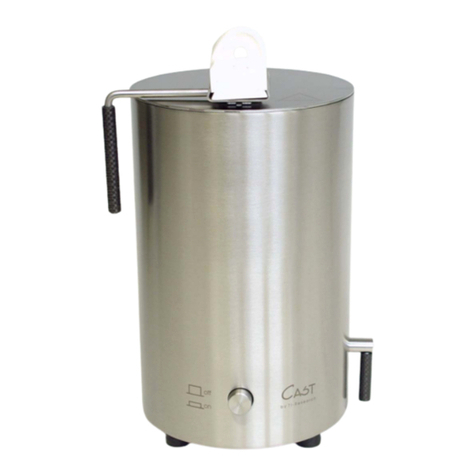
Ti-Research
Ti-Research Cast Product information
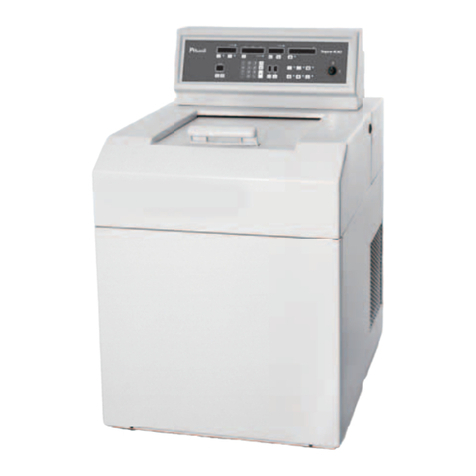
Hanil
Hanil Supra R30 quick guide
